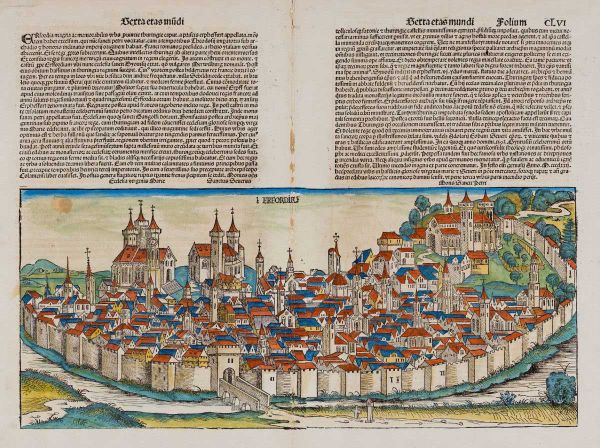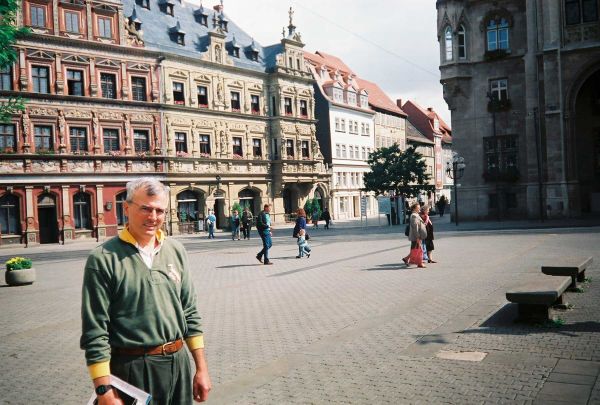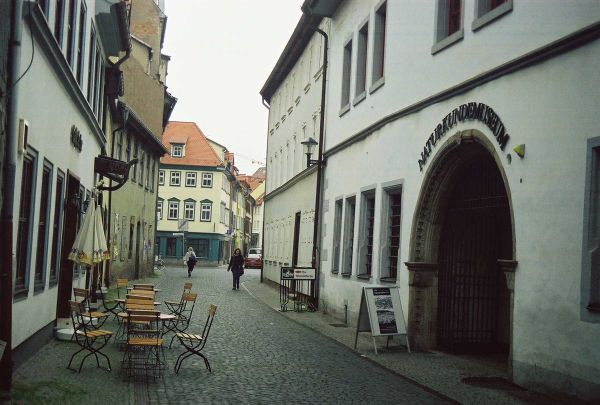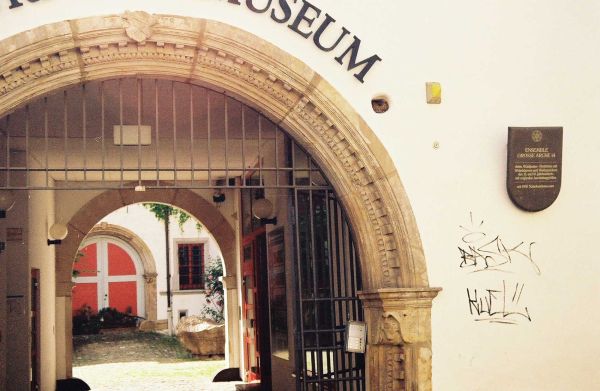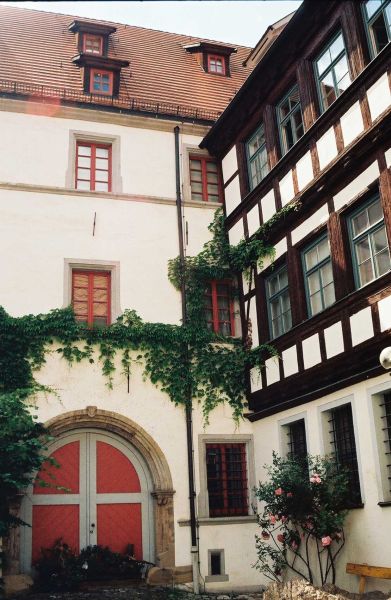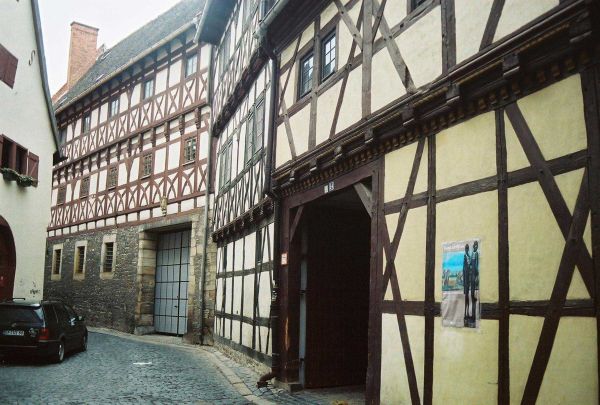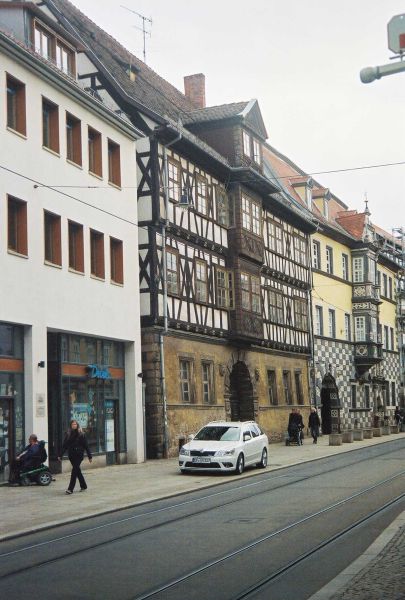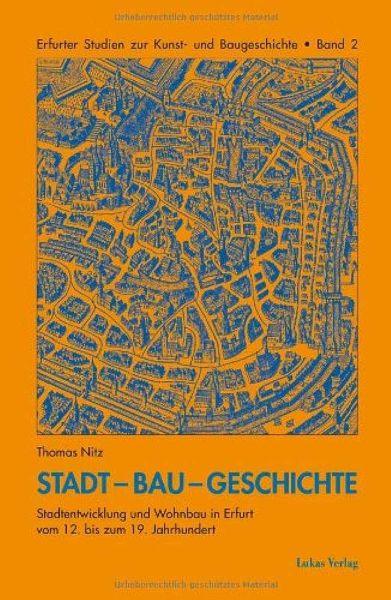Erfurt and the History of Capitalism
Erfurt and the History of Capitalism
A view of Erfurt, Germany, from 1493 The author in the Fischmarkt plaza, 1998
In 1993, my mother found a collection of old family letters in a shoe-box. She had studied German in school and recognized the peculiar "Gothic" script in most of the letters. She did not, however, speak German herself, so she handed them to me and asked me to translate them. I could not read the Gothic script at first, so I had to ask for help from German friends, and since I was still working, I had to steal time from work to translate the letters. As I read about my German ancestors, I knew I wanted to see Erfurt.
I retired in 1997 and visited Erfurt the next year. It looked terrible. Disappointed, I wanted to leave the next day. So many wonderful 500-year-old buildings looking like unpainted beached whales—basically uninhabitable—and gloomy, thwarted inhabitants looking as if they expected the Soviets to come back and enslave them, again! Fortunately, Western capital from Germany was pouring in to rebuild its Eastern counterpart.
Die Grosse Arche street Entrance to das Naturkundemuseum
The mayor of Erfurt's press-officer accompanied me on my first walks through Erfurt and reassured me. He did a 360° visual scan of the Altstadt and remarked beatifically, "Die sind unsere unpolierte Diamantsteine!" They are our unpolished diamonds! He was right; and with each succeeding visit, the "unpolierte Diamantsteine" turned into polished diamonds, making Erfurt more and more of a tourist attraction, and restoring the city's Altstadt to its 16th century glory. Every day, I made turns into narrow alleys I didn't know existed—unchanged after hundreds of years. In the Waagegasse, I found 15th and 16th century warehouses used to store Erfurt's burgeoning mercantile market.
I asked the press officer "Who built the large buildings in the Johannesstraße, the Domplatz, and the Fischmarkt?" He described the buildings as "Patrizierhäuser" and said that merchant families from the 14th, 15th, and 16th centuries built them. I made a note to myself: "The merchant families must have had money." In their heyday, the buildings would have rivaled Bill and Melinda Gates's home in California for opulence. The merchants kept an office on the ground-floor; their families lived in the upper floors, and they maintained work-spaces and warehouses in back. Wagons went through arched entrances to reach them.
During my visit in 2005, I happened upon a book that changed my view of Erfurt, titled: Erfurt: Stadt, Bau, Geschichte, by a Dr. Thomas Nitz. Dr. Nitz had received his doctorate a year or two earlier, and like every successful Ph.D. student in Germany, Nitz publish his dissertation. I bought my copy in 2005 and pored over it during the remainder of that year.
Dr. Nitz made a few statements that clearly pertain to America's contemporary dilemmas, whether to fall for the old spectre of Socialism, in its many guises, or stick with the economic plan laid out by the Founders of the nation—create a central banking system, with an economy fueled by private investment capital, and a culture of private spaces and personal freedoms.
The surprise was that Erfurt's leaders knew about the advantages of a capital-driven economy in the 12th century. The leaders, writing in Latin, promulgated the concept as "Libertas et Iusticia," known in this country as liberty and justice, "regardless of national origin." Erfurt's leaders lease land to its citizens to create businesses. The parish churches in Erfurt, shown in the print from 1493, served as tax offices, where citizens paid their property tax. The leaders described this as the "Freizinsrecht." If a citizen paid his taxes, he could do whatever he wanted with the land. All of this came under the aegis of Rechtgemeinschaft, a community subordinating itself to the rule of law, a concept more or less identical to the one created by the Founders hundreds of years later.

